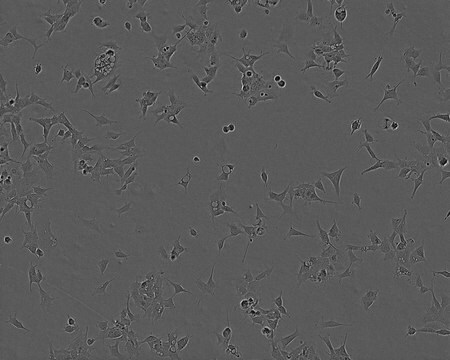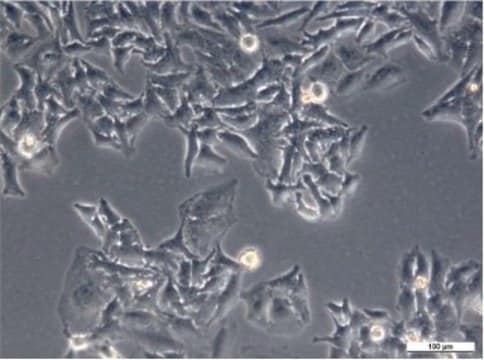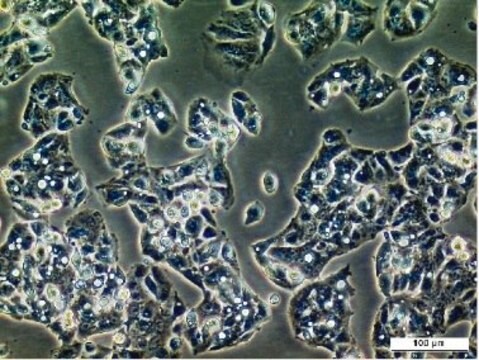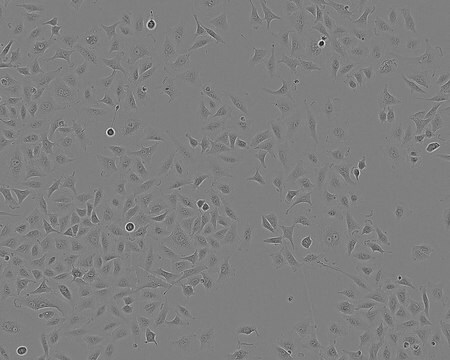推荐产品
product name
MA104, from African green monkey kidney, 85102918, Convention on the International Trade in Endangered Species of Wild Fauna and Flora (CITES)
生物源
African green monkey kidney
增長模式
Adherent
染色體組型
Not specified
形態學
Epithelial
受體
Not specified
正在寻找类似产品? 访问 产品对比指南
相关类别
細胞系來源
Monkey African Green kidney
細胞系描述
Established from an African green monkey foetal kidney. The cells are highly susceptible to Simian rotavirus SA11.
Please note: The species of origin of the MA104 cell line has been shown to be different from that claimed by the originators.
Whitaker & Hayward (1985) found the cell line to originate from an African green monkey and not a Rhesus macaque as was originally claimed. Whitaker AM and Hayward CJ (1985). The characterization of three monkey kidney cell lines. Develop. Biol. Standard. Vol 60: 125-131. PMID: 4043530. Abstract: Three monkey kidney cell lines, Vero, GL-V3 and MA-104 were subjected to karyological analysis to determine their chromosomal stability and to confirm their species of origin. Although the lines were shown to be relatively stable throughout all of the passage levels that were tested, the species of origin of one of them was found to be different from that claimed by the originators. This finding was supported by data from isoenzyme studies.
Please note: The species of origin of the MA104 cell line has been shown to be different from that claimed by the originators.
Whitaker & Hayward (1985) found the cell line to originate from an African green monkey and not a Rhesus macaque as was originally claimed. Whitaker AM and Hayward CJ (1985). The characterization of three monkey kidney cell lines. Develop. Biol. Standard. Vol 60: 125-131. PMID: 4043530. Abstract: Three monkey kidney cell lines, Vero, GL-V3 and MA-104 were subjected to karyological analysis to determine their chromosomal stability and to confirm their species of origin. Although the lines were shown to be relatively stable throughout all of the passage levels that were tested, the species of origin of one of them was found to be different from that claimed by the originators. This finding was supported by data from isoenzyme studies.
培養基
例行更新培養
Split sub-confluent cultures (70-80%) 1:3 to 1:10, i.e., seeding at 1-3x10,000 cells/cm2 using 0.25% trypsin or trypsin/EDTA; 5% CO2; 37 °C.
其他說明
Additional freight & handling charges may be applicable for Asia-Pacific shipments. Please check with your local Customer Service representative for more information.
我们的科学家团队拥有各种研究领域经验,包括生命科学、材料科学、化学合成、色谱、分析及许多其他领域.
联系技术服务部门






